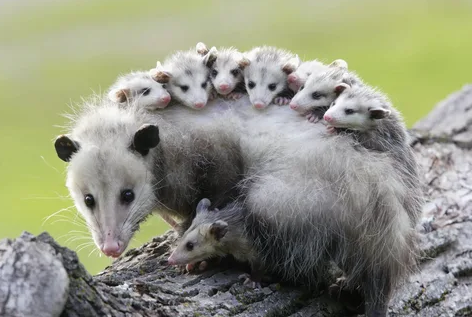Ever heard of a creature that’s both mysterious and iconic? Meet the Tñacuache! This fascinating animal holds a significant place in both ancient mythology and modern culture, captivating the imagination of many. But what makes the Tñacuache so special? Let’s dive into its world and uncover the secrets of this incredible creature.
What is the Tñacuache?
The Tñacuache, known as the opossum in English, is a marsupial native to the Americas. This nocturnal animal is characterized by its distinctive appearance: a pointed snout, large ears, and a long, prehensile tail. With its ability to play dead when threatened—a behavior known as “playing possum”—the Tñacuache has earned a reputation for being clever and adaptable.
Cultural Significance
Ancient Mythology
In many indigenous cultures, the Tñacuache has deep roots in mythology. It often appears as a symbol of survival and resourcefulness. For instance, in certain Mesoamerican legends, the Tñacuache is associated with creation myths, embodying themes of resilience and adaptability. Its ability to thrive in various environments has made it a powerful symbol of persistence in the face of adversity.
Modern Representation
In contemporary culture, the Tñacuache continues to be a source of inspiration. From folklore to literature, this creature often symbolizes wisdom and cunning. It has also made its way into popular media, where it is frequently depicted as a clever character, further solidifying its iconic status.
Unique Characteristics
Adaptability
One of the Tñacuache’s most remarkable traits is its adaptability. It can be found in diverse habitats, from urban areas to forests. This versatility allows it to thrive in a variety of environments, making it a true survivor.
Diet and Behavior
The Tñacuache is omnivorous, feeding on a wide range of foods, including fruits, insects, and small animals. Its scavenging nature makes it an essential part of the ecosystem, contributing to waste reduction and seed dispersal.
Defense Mechanisms
When threatened, the Tñacuache exhibits a fascinating behavior: it plays dead. This act can last for several hours, during which it becomes limp, emits a foul odor, and even foams at the mouth. This survival tactic has proven effective in evading predators, allowing it to escape danger.
Conservation and Awareness
Despite its adaptability, the Tñacuache faces threats from habitat destruction and road traffic. Raising awareness about this unique creature is crucial for its conservation. Efforts to protect its natural habitat and educate communities about its role in the ecosystem can help ensure its survival for future generations.
Conclusion
The Tñacuache is not just a curious creature; it is a symbol of resilience, adaptability, and the rich tapestry of mythology that surrounds it. Whether revered in ancient tales or celebrated in modern culture, this enigmatic animal continues to intrigue and inspire. By understanding and appreciating the Tñacuache, we can honor its legacy and contribute to its conservation, ensuring that this remarkable creature remains a part of our natural world for years to come.
FAQs
1. What is a Tñacuache?
The Tñacuache is the Spanish term for the opossum, a marsupial native to the Americas. It is known for its distinctive appearance and unique behaviors.
2. Where can Tñacuaches be found?
Tñacuaches are adaptable creatures that inhabit a wide range of environments, including forests, grasslands, and urban areas across North and South America.
3. What does a Tñacuache eat?
Tñacuaches are omnivorous and have a varied diet that includes fruits, insects, small animals, and carrion. They are scavengers, playing a vital role in their ecosystem.
4. What are the Tñacuache’s defense mechanisms?
When threatened, the Tñacuache has a unique survival tactic: it can “play dead.” This involves becoming limp, emitting a foul odor, and even foaming at the mouth to deter predators.
5. Why is the Tñacuache important in mythology?
In various indigenous cultures, the Tñacuache symbolizes survival and resourcefulness. It often features in creation myths and folklore, representing resilience in the face of challenges.
6. Are Tñacuaches endangered?
While not currently listed as endangered, Tñacuaches face threats from habitat destruction and road traffic. Conservation efforts are important to maintain their populations.
7. How do Tñacuaches contribute to their ecosystem?
Tñacuaches help control insect populations and contribute to seed dispersal, playing a crucial role in maintaining ecological balance.
8. Can Tñacuaches be kept as pets?
While Tñacuaches can be domesticated, they have specific care needs and legal restrictions may apply depending on the region. It’s important to research thoroughly and consider animal welfare before keeping one as a pet.
9. How can I help conserve Tñacuaches?
Supporting habitat conservation initiatives, spreading awareness about their ecological importance, and reducing road hazards can all contribute to the protection of Tñacuaches.
10. What is the lifespan of a Tñacuache?
In the wild, Tñacuaches typically live for about 2 to 4 years, while those in captivity may live longer, sometimes reaching up to 6 years or more with proper care.
